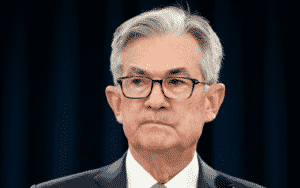United Parcel Service (UPS) and the Teamsters union are faced with a looming deadline. With just two weeks remaining, the pressure is on for both parties to reach a deal and avoid a potentially disruptive strike. Unfortunately, the outlook appears bleak, and UPS is already making preparations for a possible work stoppage.
In an effort to ensure continuity of business operations, the logistics company is currently training its employees. While it may be unrealistic to expect management workers to handle the entire workload that UPS typically manages, it is still possible that some packages may reach their final destinations.
“We are committed to securing an agreement with the Teamsters that benefits UPS employees, our customers, our union, and our company,” stated a company spokesperson in an email. “Although progress has been made, and we are close to reaching an agreement, we must take necessary precautions as an essential service provider to guarantee package delivery in the event of a strike.”
The current labor agreement is set to expire on July 31 at midnight. This means that workers could potentially go on strike starting from August 1. However, if negotiations are progressing well, there is a chance that work could continue uninterrupted. At this time, the Teamsters have not provided any immediate response or comment regarding the situation.
If a strike were to occur, it would be the first time since 1997 that the Teamsters have taken such action against UPS. Back then, one of the primary concerns was the transition from defined-benefit pension plans to defined-contribution retirement savings. In the present day, the main focal point appears to be the issue of inflation.
Both UPS and the Teamsters now face a race against time to find common ground and avert the potential fallout of a strike. As the deadline draws near, all stakeholders anxiously await the outcome of these critical negotiations.
Consumer price inflation has been a recurring concern in labor negotiations, with its impact on the value of wages and benefits being a significant factor for unions. Let’s take a closer look at recent developments.
Impact of Inflation on Contractual Agreements
In the years preceding the 1997 strike, consumer price inflation averaged at approximately 2.5% annually. Comparatively, ahead of the 2019 negotiations, the average figure was below 2%. However, recent trends indicate a much higher inflation rate, hovering at an average of about 4.5% per year over the past four years.
It is important to acknowledge that surging inflation rates can erode the purchasing power of wages and benefits that have already been agreed upon in contracts. As a result, unions are likely to seek measures to counter this effect and ensure stability in the face of future inflation.
Recent Successful Labor Deal at Spirit AeroSystems
Spirit AeroSystems, a supplier for Boeing (BA), recently resolved a labor stoppage by securing a contract that guarantees wage increases ranging from approximately 6% to 7% annually over the next four years. This serves as an example of how companies are addressing the concerns raised by labor unions.
Focus Shift to Auto Industry
After the spotlight on UPS, negotiations between auto manufacturers and the United Auto Workers will take center stage. These talks regarding new labor agreements have just commenced in the past few days, and their outcomes will be closely watched.
As negotiations unfold and potential labor actions loom in the air, it will be interesting to observe how these developments impact various stakeholders.
